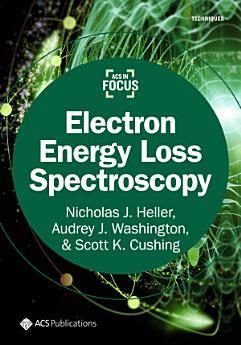Electron Energy Loss Spectroscopy
Acerca de este libro electrónico
This primer is divided into five chapters to guide your reading:
Chapter 1 introduces the concept of electron-based spectroscopy and defines what qualifies as an electron-based technique. The authors outline the principal interactions at play and present a range of methods that correspond to different types of signals. The chapter concludes with a concise historical narrative tracing the development of EELS.
Chapter 2 details the background required to build a deeper understanding of EELS and spectroscopy. The authors connect photon-based and electron-based approaches, highlighting where they overlap and where they diverge.
Chapter 3 focuses on the fundamental instrumentation used in electron spectroscopy, discusses optimization strategies, and introduces key instrument parameters. The authors compare different electron sources, optical geometries, and lens configurations.
Chapter 4 explores scattering mechanisms and electron–matter interactions, offering theoretical underpinnings and guidance on interpreting EELS spectra. Key concepts such as elastic and inelastic scattering, core-level transitions, plasmons, and analysis methods are reviewed.
Chapter 5 concludes with real-world applications, such as the use of EELS in biology, nanomaterials, polymers, and solid-state systems. The authors also briefly survey emerging directions, including in situ and ultrafast EELS, underscoring the method’s evolving landscape.
Acerca del autor
Nicholas J. Heller is a doctoral candidate in Physical Chemistry at the California Institute of Technology and is advised by Dr. Scott Cushing. He earned his B.S. in Chemistry from the University of Massachusetts, Amherst in 2021 where he was awarded the John A. Chandler Memorial Scholarship, The Edward Shapiro Award, and the Professor Jack Ragle Award. His current research as an NSF graduate fellow focuses on the development of a novel ultrafast electron-pump–electron-probe spectrometer to further enable investigation into complex many-body interactions that dictate phenomena like strongly correlated insulators, superconductivity, and exotic phases in solid-state materials.
Audrey J. Washington is a doctoral candidate in Chemistry at the California Institute of Technology, Division of Chemistry and Chemical Engineering. She obtained her BS in 2023 from San Diego State University, where she majored in Chemistry with a minor in Physics. There, her research focused on the development of heterogeneous catalysts for the electrochemical and photocatalytic reduction of plastics and CO2. As a graduate student and NSF GRFP Fellow, Audrey is driven by a desire to unravel the fundamental mechanistic processes that govern catalytic reactions. Her research is dedicated to probing electron dynamics in materials—crucial to advancing next-generation catalytic systems. Under the mentorship of Dr. Scott Cushing, she is developing ultrafast electron spectrometers to capture and analyze transient electronic states in real time. By leveraging state-of-the-art electron pump–electron energy loss (EELS) probe spectroscopy, she seeks to unveil the intricate pathways of charge transfer and carrier interactions that underpin energy conversion and catalytic efficiency.
Scott K. Cushing is an Assistant Professor at the California Institute of Technology with a multidisciplinary background spanning Chemistry, Materials Science, and Physics. His research focuses on creating new scientific instrumentation to translate quantum and ultrafast phenomena into practical devices. The Cushing lab is currently pioneering the use of ultrafast X-rays, electrons, and entangled photons for a range of microscopy and spectroscopy applications. Scott has been awarded DOE, AFOSR, Sloan, Cottrell, DARPA, and ACS-related Early Career awards. Scott has published over 70 papers that have accumulated over >10,000 citations. Scott holds multiple patents, some of which have led to start-up companies.








